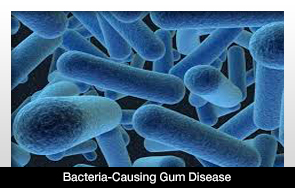 |
Teeth and bone are important and complex structures in humans and other animals, but little is actually known about their chemical structure at the atomic scale. What exactly gives them their renowned toughness, hardness and strength? How do organisms control the synthesis of these advanced functional composites?
Now, using a highly sophisticated atomic-scale imaging tool on a sea creature’s tooth, two Northwestern University researchers have peeled away some of the mystery of organic/inorganic interfaces that are at the heart of tooth and bone structure. They are the first to produce a 3-D map of the location and identity of millions of individual atoms in the complex hybrid material that allows the animal to literally chew rock.
Demonstrating that atom-probe tomography (APT) can be used to interrogate such materials opens up the possibility of tracking fluoride in teeth and cancer and osteoporosis drugs in bone (at previously inaccessible length scales). The detailed knowledge of organic/inorganic interfaces also will help scientists rationally design useful new materials—flexible electronics, polymers and nanocomposite materials, such as organic photovoltaics—that combine the best properties of organic and inorganic materials.
The results are published by the journal Nature.
“The interface between the organic and inorganic materials plays a large role in controlling properties and structure,” said Derk Joester, senior author of the paper. “How do organisms make and control these materials? We need to understand this architecture on the nanoscale level to design new materials intelligently. Otherwise we really have no idea what is going on.”
Joester is the Morris E. Fine Junior Professor in Materials and Manufacturing at the McCormick School of Engineering and Applied Science. Lyle Gordon, a doctoral student in Joester’s lab, is the other author of the paper.
The two set out to find the organic fibers they knew to be an important part of the tooth’s structure, buried in the tough outer layer of the tooth, made of magnetite. Their quantitative mapping of the tooth shows that the carbon-based fibers, each 5 to 10 nm in diameter, also contained either sodium or magnesium ions. Joester and Gordon are the first to have direct proof of the location, dimension and chemical composition of organic fibers inside the mineral.
They were surprised by the chemical heterogeneity of the fibers, which hints at how organisms modulate chemistry at the nanoscale. Joester and Gordon are anxious to learn more about how the organic fibers interface with the inorganic minerals, which is key to understanding hybrid materials.
“The tooth’s toughness comes from this mix of organic and inorganic materials and the interfaces between them,” Joester said. “While this is in principle well-known, it is intriguing to think we may have overlooked how subtle changes in the chemical makeup of nanoscale interfaces may play a role in, for instance, bone formation or the diffusion of fluoride into tooth enamel. In this regard, atom-probe tomography has the potential to revolutionize our understanding.”
APT produces an atom-by-atom, 3-D reconstruction of a sample with subnanometer resolution. But many in the field didn’t think APT would work to analyze a material made up of organic and inorganic parts.
Fortunately for Joester and Gordon, Northwestern has both David Seidman, a leader in the field who uses APT to study metals, and two of the few APT instruments in the country. (There are less than a dozen.) Seidman, Walter P. Murphy Professor of Materials Science and Engineering, encouraged Joester to take the risk and use APT to study biological architectures. The scientists also were able to exchange ideas with the engineers developing 3-D atom-probe instruments at CAMECA, a scientific instrumentation company in nearby Madison, Wis.
Joester and Gordon imaged teeth of the chiton, a tiny marine mollusk, because much is known about the biomineralization process. The chiton lives in the sea and feeds on algae found on rocks. It continually makes new rows of teeth—one a day—to replace mature but worn teeth; in conveyor-belt fashion, the older teeth move down the creature’s tongue-like radula toward the mouth where it feeds.
Chiton teeth resemble human teeth in that they have a hard and tough outer layer—equivalent to our enamel—and a softer core. Instead of enamel, the rock-chewing chitons use magnetite, a very hard iron oxide, which gives their teeth a black luster.
The researchers extracted micron-sized samples from the leading edge of the tooth. Using a focused ion beam tool at the Northwestern University Atomic and Nanoscale Characterization Experimental Center core facility, these samples were fashioned into very sharp tips (less than 20 nm across). The process is reminiscent of sharpening a pencil, albeit with a supercharged stream of gallium ions.
The APT technique applies an extremely high electric field to the sample; atoms on the surface ionize, fly off and hit an imaging detector (similar to those found in night-vision equipment). The atoms are stripped off atom-by-atom and layer-by-layer, like peeling an onion. Computer methods then are used to calculate the original location of the atoms, producing a 3-D map or tomogram of millions of atoms within the sample.
Joester and Gordon now are studying the tooth enamel of a vertebrate and plan to apply APT to bone, which is also made of organic and inorganic parts, to learn more about its nanoscale structure.
The National Science Foundation and the Canadian National Sciences and Engineering Research Council supported the research.

|











